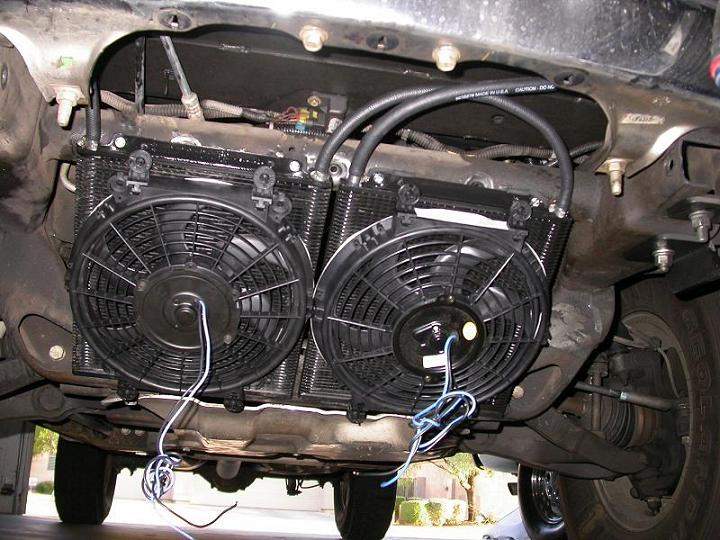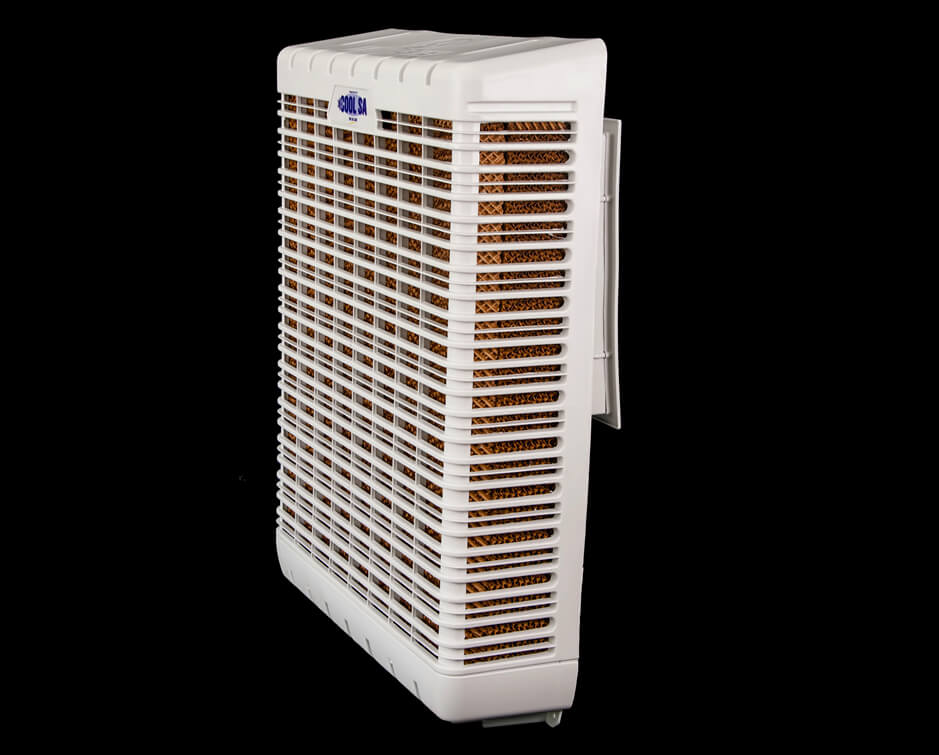How does a transmission cooler function? Fluid heated by the transmission, engine, or power.
Transmission Cooler Mounting Bracket Kit For 2003-2007 Ford F-250 or F-350 (Includes Cooler)
Flex-A-Lite® has taken the guesswork out of selecting and mounting the right transmission cooler for your 2003-2007 Ford F-250 or ...Transmission Cooler Mounting Bracket Kit For 2007-2018 Jeep Wrangler JK (Includes Cooler)
Flex-A-Lite® has taken the guesswork out of selecting and mounting the right transmission cooler for your 2007-2018 Jeep Wrangler...Transmission Cooler Mounting Bracket Kit For 2003-2009 Dodge Ram 2500-3500 (Includes Cooler)
Flex-A-Lite® has taken the guesswork out of selecting and mounting the right transmission cooler for your 2003-2009 Dodge Ram 2500...
It’s no secret that heat kills automatic transmissions.
6 Row Engine Transmission Oil Cooler Kit 6' Inch Electric Fan 6AN In-Line Thermostat Kit $99.95 $79.95 Fluid Cooler: Universal 6 row tube and fin all-aluminum heavy duty transmission cooler kit. American Volt 6 Row Engine Transmission Oil Cooler 6' Inch Electric Cooling Fan & 6AN In-line Hose Thermostat Switch Wiring Kit (150'F On - 135'F Off) 4.0 out of 5 stars 13 $89.95 $ 89. My trans cooler fan is on all the time now when the engine is running. It always used to come on briefly when you start the engine but since this morning it's staying on. Is the fan controlled soley by a temp switch on the cooler or is it/also ECU controlled? Thanks for any suggestions. HD Flex Fans, STANDARD Rotation (RH) HD Flex Fans, REVERSE Rotation (LH) Aluminum Flex Fans; Stainless Steel Flex Fans; Fan Spacers, Replacers, & Clutches; Transmission Coolers. Heavy Duty Transmission Coolers; Thin Line Transmission Coolers; Frame Rail Coolers; Transmission Cooler Accessories; Specialty Coolers; Oil Adapters.
This is especially true in big-power, street-strip machines that combine lots of horsepower with a small torque converter and steep rear axle ratio. Engine rpm is up across the board, and the automatic transmission builds heat. This is also true for trucks that haul heavy loads or tow trailers battling tough conditions such as long grades, high altitudes, or desert heat. In any case, loads coupled with stop-and-go traffic increase the heat level in an automatic transmission.
How Hot is Too Hot?
The ideal operating temperature for automatic transmission fluid is somewhere between 175 and 225 degrees F. Here’s what can happen above this range:
Trans Cooler With Fan
- At approximately 240 degrees F, important additives begin to cook in the automatic transmission fluid (ATF). The result is the formation of varnish inside the transmission.
- At approximately 260 degrees F, internal transmission seals, which are often manufactured from a polyacrylate material, begin to harden. The end results are internal and external leaks as the the seals lose their elasticity.
- At approximately 295 degrees F, transmission clutch plates begin to slip because the oil is breaking down further.
- At approximately 315 degrees F, seals and clutches effectively burn out. Carbon forms in the oil and for all intents and purposes, the transmission is now junk. Often, a transmission will die within a few thousand miles (or sooner) if subjected to 300-plus degree heat.
The built-in coolers that reside in the bottom of the radiator are marginal at best. A typical “in-the-rad” cooler will reduce the heat of the ATF but it’s also influenced by the engine coolant temperature. And at the same time, it too can influence the engine coolant temperature.
How can that happen?

If the vehicle in question has a thermostat that opens at 195 degrees F, once warmed to operating temperature, the transmission cooler will have a tough time reducing the heat of the ATF below 195 degrees F. At the same time, if the transmission is overworked, it might raise the operating temperature of the ATF to 250 degrees F or more. This heat can be transferred to the engine coolant resulting in a potential boil over.
So what’s the answer?
You can add an external cooler. But before you rush out and buy the first cooler available, here’s an example to ponder:
Decades ago, we built an L88 powered 1969 Camaro complete with a turbo 400, a 12-bolt filled with 4.88:1 gears and an 8-inch torque converter. It was a street-driven car, but even with a big, four-core rad, the combination was always ready to melt the transmission fluid. In a conversation with Bob Fouts at Earl’s Performance, we garnered this critical kernel of information: It is virtually impossible to overcool an automatic transmission, especially one in a high performance application. Naturally, this might not apply to vehicles operating near the Arctic Circle, but in the rest of the world, it basically holds true.
Types of Coolers
Typically, there are two types of cooler styles available: “tube-and-fin” and the “stacked plate” cooler. A conventional tube-and-fin cooler is the most common type you’ll find. Generally speaking, this cooler configuration consists of fins that are placed over aluminum tubes, which are laid out in “S” patterns. The idea is to have air flow over the fins, which in turn creates a heat sink effect. This effect draws heat from the ATF. Tube-and-fin coolers are inexpensive and easy-to-build.
The other type of cooler that is available is the “stacked plate” design. This cooler is laid out in much the same manner as the radiator in your car. Rather than using a tube to carry the ATF inside the cooler, the fins actually form the passage for the fluid to pass through. This is almost identical to the process Detroit uses to build modern radiators. This type of cooler configuration is much more efficient than the tube-and-fin style. And if you search the Summit Racing website, you’ll see all sorts of good options, including top-of-the line versions from Earl’s Performance.

The stacked plate, or “modular” cooler, has been in use since prior to WWII. During the early 1930s, it was first developed for use with the Rolls Royce Merlin engine that powered the Spitfires and Hurricanes in the Battle of Britain. It was ideal because of its dense air fins and “turbulator plates” which provide maximum liquid side (internal) and airside (external) surface area. The collector or end tanks ensure minimum flow restriction, while the fully brazed construction results in the most efficient possible thermal transfer between liquid and air. This old Rolls Royce Merlin design is the most thermally efficient liquid-to-air heat exchanger format available.
Now, you’re probably saying: “there’s a big difference between the conditions seen in an aircraft and those experienced by my street driven car.” That’s true, but these old war birds were subsonic and piston powered. In today’s terms, those old aircraft were dead slow, and because of that, heat exchanger technology has more in common with today’s trucks and cars than you might think. Plus, a heat exchanger or cooler doesn’t know if it’s cooling engine oil, hydraulic fluid, or ATF. When this basic, modular design is utilized, and the oil flow and air speed of the vehicle is taken into consideration, then the optimum heat exchanger can be produced.
Stacked Plate vs. Tube-and-Fin Coolers
How effective is the stacked plate, modular design in comparison to a more common tube-and-fin arrangement? Typically, a modular cooler (such as the Earl’s coolers shown in the photos below) will reject as much as three times the heat for a given area than a tube-and-fin cooler. The modular configuration cooler will also have less than half of the pressure drop found in a tube-and-fin cooler.
Copper-Bass vs. Aluminum Coolers
When it comes to heat exchanger construction, what’s best: copper and brass or aluminum? In most cases, the aluminum exchangers are nearly as thermally efficient as the copper and brass versions, but significantly lighter. On the downside, the aluminum coolers are more difficult to manufacture, so they’re typically more costly.
Best Trans Cooler With Fan
Another thing to consider is the paint. The common black paint that is preferred by most local radiator shops can act as thermal barrier instead of promoting the transfer of heat. A proper aluminum heat exchanger will either be anodized, or it will have a very thin coat of baked, heat exchanger paint (typically grey, silver, or black in color).
Fluid Cooler Mounting Tips
According to Earl’s Performance Products, the cooler must be mounted in a stream of moving air at ambient temperature to operate efficiently. It is not a good idea to mount the oil cooler behind the radiator where it will receive only heated air. It is not enough to lead air to the cooler; the heated air must have somewhere to go after it passes through the core. Air naturally flows from a region of relatively high pressure to a region of relatively low pressure, so you should mount your cooler in the airstream ahead of the vehicle radiator. That way, it will always be subject to high pressure at the face, and the engine fan will always provide a region of low pressure behind the cooler.
You also need to consider the location of the inlet and outlet ports. Coolers should never be mounted so that both the inlet and outlet ports are on the bottom. The best method is to have the ports on the top. If this isn’t possible, the next best scenario has the cooler mounted on the side so that the ports are arranged horizontally.
There are a number of ways to mount the cooler; however, Earl’s offers a slick system for their coolers. This aluminum bracket is designed to hold the cooler securely without damage from vibration. Included is a pair of brackets (with integral rubber cushions) and e-coated aircraft quality hardware with rubber insulators spacers. Earl’s offers this bracket system for all of their Temp-A-Cure cooler models.
Port configuration is usually a matter of preference. The Earl’s coolers incorporate -10 AN O-ring boss ports. From here, you simply select the AN adapter that suits your needs. It’s no secret AN fittings are less prone to leakage and obviously much more secure than pipe thread examples. A -6 AN arrangement is most common for an automatic transmission.

(article continues below slideshow)
Selecting a Cooler Size
For high performance street cars or trucks that are subjected to heavy loads or towing, bigger is always better. As we’ve already mentioned, it’s impossible to overcool an automatic transmission.
The nature of the Earl’s Temp-A-Cure cooler (shown in the slideshow) allows it to be manufactured in countless different sizes. In fact, Earl’s offers a wide array of coolers to suit almost any application. The narrow 8¼-inch wide coolers are available in heights ranging from 2 to 18½ inches. Along with the narrow coolers, you can purchase wide body coolers. The “extra wide” coolers from Earl’s have a width of 15¼ inches and heights range from 2 to 18½-inches. Finally, Earl’s manufactures curved coolers that have a width of 11.562-inches and a height from 3.05 inches up to 4.919 inches. Basically, any cooler with a face height up to 18½ inches can be created.
In the end, money that’s spent on a proper cooler is like money in the bank. Not only will your transmission live longer, it will also be more efficient.
